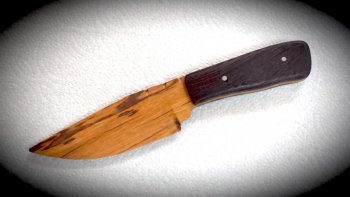smithy
Well-Known Member
OK, I've been hanging around for about 8/9 months and reading everything I can on just about any phase of knifemaking and I have questions I can't find answers through searching (either there is no material or so much that it is hard to dig through).
1. What material is good to use for practice? (I am VERY tired of ruining my supply of high carbon steel)
2. What is the right way to break in a new belt? (I'm also VERY tired of ruining belts)
3. What is the best way to develop a technique for learning to grind bevels? For example, when I was a new goldsmith, soldering was my nemisis. The secret was developing the proper technique and heat control.
These are a few of my beginning questions. I am trying to vastly shorten the learning curve so that I can make good knives before old age sets in. ...Teddy
...Teddy
1. What material is good to use for practice? (I am VERY tired of ruining my supply of high carbon steel)
2. What is the right way to break in a new belt? (I'm also VERY tired of ruining belts)
3. What is the best way to develop a technique for learning to grind bevels? For example, when I was a new goldsmith, soldering was my nemisis. The secret was developing the proper technique and heat control.
These are a few of my beginning questions. I am trying to vastly shorten the learning curve so that I can make good knives before old age sets in.

